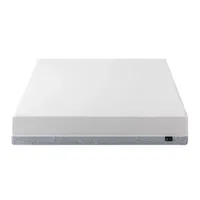Best memory foam mattress 2025: Tested by sleep experts
Want the cushioned pressure relief of a memory foam mattress? Here's our top 10 — tested and recommended by experts.

In this guide to the best memory foam mattresses of 2025 we’re exploring our favorite all-foam beds for every sleep style. Memory foam is best known for its ‘body-contouring’ (like getting a foam hug) but this is an increasingly diverse material and we’ve tested memory foam mattresses in a vast array of feels and firmnesses.
Memory foam mattresses use multiple layers of foam to create both cushioning and support; some of the best mattresses we’ve tested have been all-foam models. We’ve even watched memory foam being mixed, baked and shaped into mattresses — we know this material from the inside out.
Although memory foam is often used in cheaper beds, luxury memory foams are becoming popular and with regular mattress sales you can find an all-foam bed for every budget. Read on to find our top memory foam mattresses for all sleep needs, tested and recommended by experts.
1. The best memory foam mattress overall of 2025

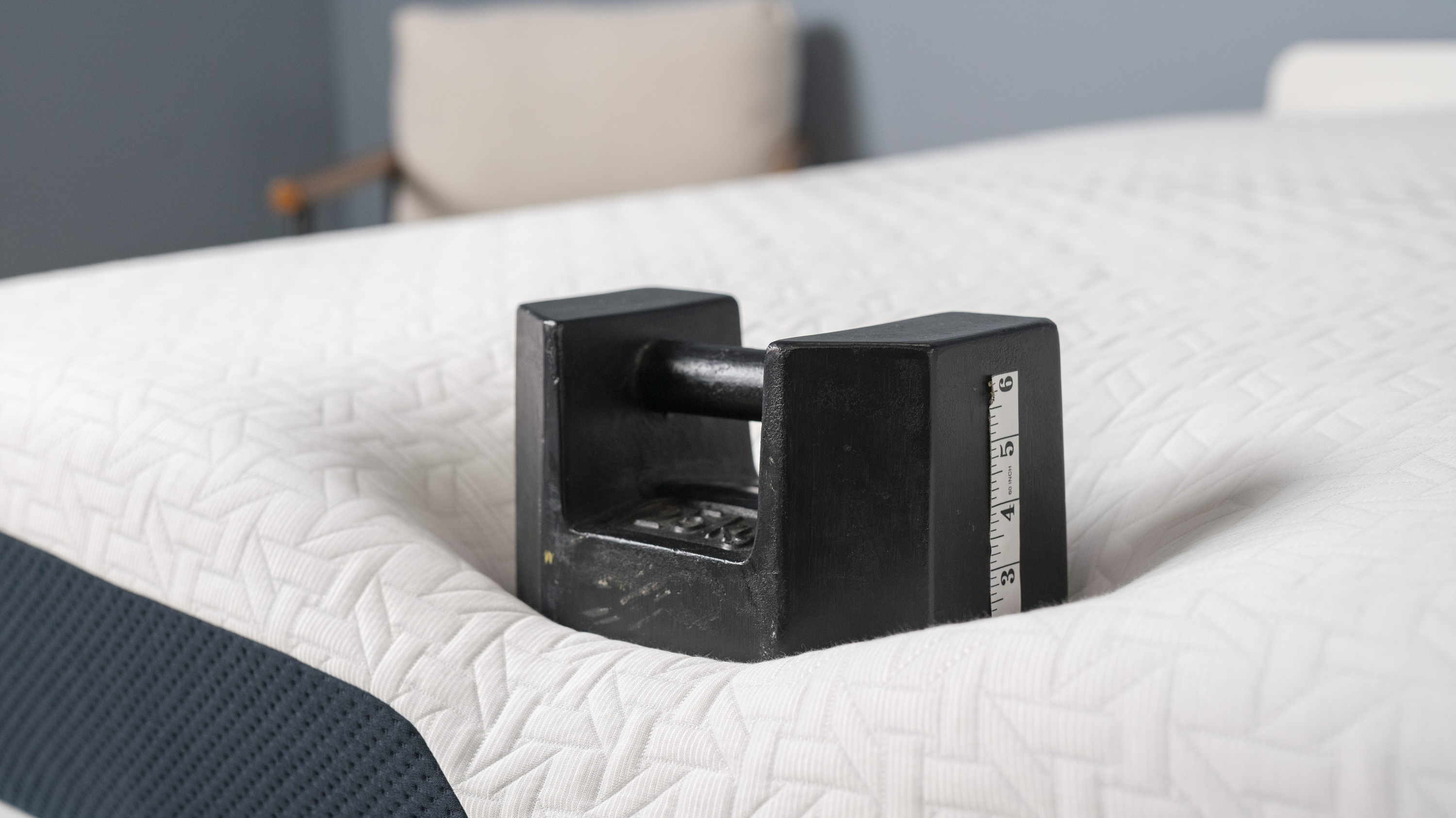


Specifications
Reasons to buy
Reasons to avoid
The Nectar Premier Memory Foam delivers a luxury feel, superb pressure relief and five-star motion isolation, all at a mid-range price tag. It's an inch thicker than the flagship Nectar Classic you'll find further down this guide and it puts that inch to good use, with a "sumptuous and supportive" feel our testers loved for side sleeping.
We found the Nectar Premier has a medium-firm feel, although it leans more towards 'medium' than 'firm,' with a softer finish than the Puffy or Nectar Classic. The side and back sleepers on our team found it instantly comfortable, contouring to the joints as soon as they hit the bed to relieve aches at pressure points. It delivers more of the traditional body-hugging foam feel than the Nectar Classic that used to top this guide, which is one of the reasons its our new favorite memory foam mattress.
The other reason is that the Nectar Premier performed well across our in-house tests. Heat-wicking fibers help warmth disperse even when embraced in foam, the dense materials absorb movement so your partner can toss and turn without waking you, and the edges — the weakest area of the mattress — are strong enough to comfortably support sitting (although admittedly not as sturdy as the Plank Firm's sides.) It's perhaps not as luxurious as the Saatva Contour5, but at just $949 for a queen it punches above its weight to earn the top spot in this guide.
What we like about it...
✅ Relieves pressure from head to toe: The dense foams of the Nectar Premier create a feel our testers described as "sumptuous", molding to the body to evenly distribute weight and prevent the dreaded dead arm or numb hip of pressure build-up. It's among the best mattresses for side sleepers we've tested.
✅ Eats up movement to prevent disruption: Our lead tester described the Premier as "ideal for sharing with a restless partner" because the foams absorb motion, ensuring they could hardly feel their partner move at night.
✅ Stays cool: Memory foam mattresses can trap heat but the Nectar Premier is infused with heat wicking fibers to capture and disperse heat. While it's not quite as cool to the touch as the Cocoon by Sealy Chill below, we did award temperature control close to full marks.
What we don't like about it...
❌ Too soft for stomach sleepers: The Nectar Premier Memory Foam Mattress will suit most sleep styles, but those who prefer to lie on their front should consider the firmer support of the Plank Firm, or even the Nectar Classic.

The Nectar Premier Memory Foam Mattress is a worthy winner of the top spot in our memory foam mattress guide. Our testers struggled to find fault, praising the balance of support and pressure relief, as well as the five-star motion isolation. I got my hands on the Nectar Premier and agreed with the assessment of "sumptuous" — you can really feel those dense foams at work. And with a queen only $949 it's impressive value for money. If you can't afford the Contour5 but you still want a touch of luxury, the Premier will deliver.
Read more: Nectar Premier Memory Foam Mattress review
2. The best cheap memory foam mattress




Specifications
Reasons to buy
Reasons to avoid
The Siena is a reliable, all-foam mattress by Resident Home, the same company behind the Nectar Premier that tops this guide. We think it's the best cheap mattress you can buy. The EGOHOME does come close but superior cooling gives the Siena the edge.
Budget memory foam mattresses often fall into the same traps: not enough support and a tendency to sleep hot. Our testers found the Siena Memory Foam Mattress side-stepped these issues, with a firm feel that holds the entire body and avoids the sinking 'hug' that can trap heat (although it's not as cool as the Cocoon Chill.) That firmness means you don't get the classic memory foam 'hug' of other mattresses (choose the Tempur-Adapt if that's particularly important to you). But it's also very sturdy — it doesn't suffer from the sag that often afflicts cheaper all-foam models.
What we like about it...
✅ Sturdy edge support: Memory foam mattresses have a reputation for being weak at the sides, but the Siena is an exception to that rule. This is particularly useful if you have mobility issues and need to push out of bed.
✅ Comfortable for stomach sleepers: The best mattresses for stomach sleepers are typically hybrids, but the Siena is the rare all-foam bed with enough firm support to keep your hips elevated when lying on your front. The Plank is another good option.
✅ A durable build: Cheap memory foams can often show dips and sags after several years of use, but our testers felt the Siena Mattress is likely to deliver good longevity (although if you can afford to spend more, the Nectar Classic should last longer.)
What we don't like about it...
❌ No classic foam 'hug': If you're shopping for a memory foam mattress, there's a good chance you want the sink-in feel we associate with all-foam beds. You won't get that with the Siena, as this is a mattress you lie on top of. The EGOHOME is better for marshmallow-ness, or try the Zinus (also tested) for something super soft.
❌ Lacks some pressure relief: The Siena mattress doesn't offer much cushioning at the touch points, and while it softens with use, the pressure relief could be improved. The Nectar Premier Memory Foam mattress is a better option if you tend to wake up with sore shoulders.

I've been testing memory foam mattresses for years so I know how rare it is to find one that performs as highly as this one did for the small price tag. The Siena Memory Foam Mattress aced nearly all of my team's in-house tests, punching above its weight in terms of support, motion isolation, temperature regulation and edge support. The latter surprised me because most foam mattresses I've slept on have pretty weak edge support. I did find the Siena Memory Foam much firmer than advertised though, so don't pick this mattress if you like a medium feel – I'd recommend the Nectar Classic instead. But if you love firm mattresses and enjoy the feel of memory foam, the Siena is your best bet.
Read more: Siena Memory Foam Mattress review
3. The best luxury memory foam mattress




Specifications
Reasons to buy
Reasons to avoid
The Saatva Contour5 is a premium memory foam mattress with a sumptuous finish akin to a five star hotel bed. Using dense high-quality foams to create a supportive hug feel, the Contour5 comes out on top for sheer quality — the only reason it isn't at number one is the hefty price tag.
With both a medium-firm and firm feel to choose from, the Contour5 can suit a range of sleep styles. Our testing panel found the thick foams comfortable from the very first night, with a cradling effect similar to the foams of the Tempur-Adapt. Despite the pressure reliving hug, the Contour5 is able to maintain a cooler sleep feel. Perhaps not comparable to the Cocoon Chill, but our lead tester never woke up sweating.
If you're looking for a luxury mattress, the Contour5 is untouchable. However, if the price tag is an issue, the Nectar Premier Memory Foam Mattress is a suitable alternative. Although it lacks the variety of the Contour5 — with two feels, the Contour5 is the most versatile mattress in this guide.
What we like about it...
✅ A cooler 'hug': Saatva uses cooling phase change material to keep temperatures low during the night. It's not quite the cool feel of the Cocoon Chill, but the Contour5 keeps you in a close hug that's cozy, not stuffy.
✅ Multiple firmness levels: The Contour5 is available in a 'Medium' and 'Firm' feel, to suit more sleep positions. We tested the Medium and while slightly firmer than expected it's ideal for side sleeping. Front sleepers should consider the Firm.
✅ Sumptuous feel: Lie down on the Contour5 Mattress and it provides immediate comfortable cushioning — that's what our testers discovered, at least. You can feel the quality in the foams as they contour to your joints.
What we don't like about it...
❌ Weak edge support: Weaker edges are a common complaint of memory foam mattresses, but considering the price tag of the Contour5, we might expect better. Especially as hybrid Saatva mattresses, such as the Saatva Classic, often excel in this area.
❌ $99 return or exchange fee: The majority of the beds in this guide come with free returns, so the $99 fee from Saatva feels like a sore spot. It's not exactly a deal breaker — or that unusual, the Tempur-Adapt has a returns fee as well — but it is a frustration when budget beds such as the Nectar Classic offer it for free.

It feels hard to justify the cost of the Saatva Contour5 at first, at full price, a queen is $2,995, especially as a queen Nectar Premier will often set you back just $949. But the Contour5 outshines most beds in this guide when it comes to design, durability and overall comfort. You can feel the quality in the dense foams, while the cooling technology ensures the Contour5 avoids the pitfalls of other all-foam beds. It can't beat the Nectar on price or benefits apart from shipping — Saatva offers free White Glove Delivery, compared to Nectar's standard free shipping — but if you have the budget I highly recommend the Contour5. If you sleep hot and have a small budget, I recommend the Cocoon Chill instead.
Read more: Saatva Contour5 Mattress review
4. The best cheap cooling memory foam mattress
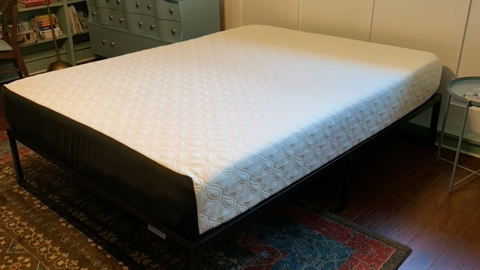



Specifications
Reasons to buy
Reasons to avoid
The Cocoon by Sealy Chill mattress is an all-foam bed that uses a phase-change material cover to wick away heat and sweat. As a budget-friendly all-foam mattress, our testers were initially skeptical of the Cocoon's cooling abilities. But after a few weeks sleeping on it, we agreed this is one of the best cooling mattresses around.
The stand-out feature here is the phase change cover, which absorbs heat from the body to keep you cooler. It can't quite compare to the premium cooling of something like the GhostBed Luxe, but on the other hand, the Cocoon is more than half the price. With a similar, if slightly firmer, feel to the Nectar Classic below the Cocoon Chill suits most sleep styles, but side sleepers might prefer the plusher Saatva Contour5. For hot sleepers on a budget, you can't beat the Cocoon by Sealy Chill — but if you have more money to spend, consider upgrading to the hybrid model for better cooling.
What we like about it...
✅ A cooler feel on a budget: Cooling mattresses are typically premium beds, but the Cocoon by Sealy Chill offers high-quality temperature regulation at a mid-range price.
✅ Comfortable for most sleep positions: The Cocoon Chill has a medium-firm feel with good pressure relief that will suit most sleep styles. If you have a bigger build, you'll probably feel more comfortable lying on your front or back.
✅ Eases back pain: The Cocoon Chill holds the lumbar region in a comfortable neutral alignment and the cooling is another bonus — you're less likely to toss and turn (potentially aggravating an injury) if you're a comfortable temperature.
What we don't like about it...
❌ Limited contouring: The Cocoon Chill does gently adapt to your frame, but there isn't the classic 'hug' you might expect from memory foam. If you want a squishy embrace that doesn't sleep hot, consider the Contour5 at (but be prepared to pay significantly more).
❌ Too warm for seriously hot sleepers: If you struggle with night sweats or hot flashes, the Cocoon Chill might not provide the specialist cooling you need. Upgrading to the hybrid version will enhance cooling, otherwise, consider the GhostBed Luxe for a softer feel with even better temperature regulation.

I'm a hot sleeper so I'm naturally wary of memory foam mattresses (I've tested far too many that transform into mini ovens within an hour of sleeping on them). The Cocoon by Sealy Chill Memory Foam is an outlier on two fronts: one being that it dissipates heat well, and this down to its use of gel memory foam and a cover infused with heat-wicking Phase Change Material. It's also an outlier because it does all that cooling (in addition to reducing painful pressure points along the body) for a fraction of the average cost of a queen size mattress ($699 plus $179 of free bedding). By the way, it's always 35% off – so don't feel rushed to buy it if you need more time to consider your purchase.
Read more: Cocoon by Sealy Chill Mattress review
5. The best memory foam mattress for combi sleepers



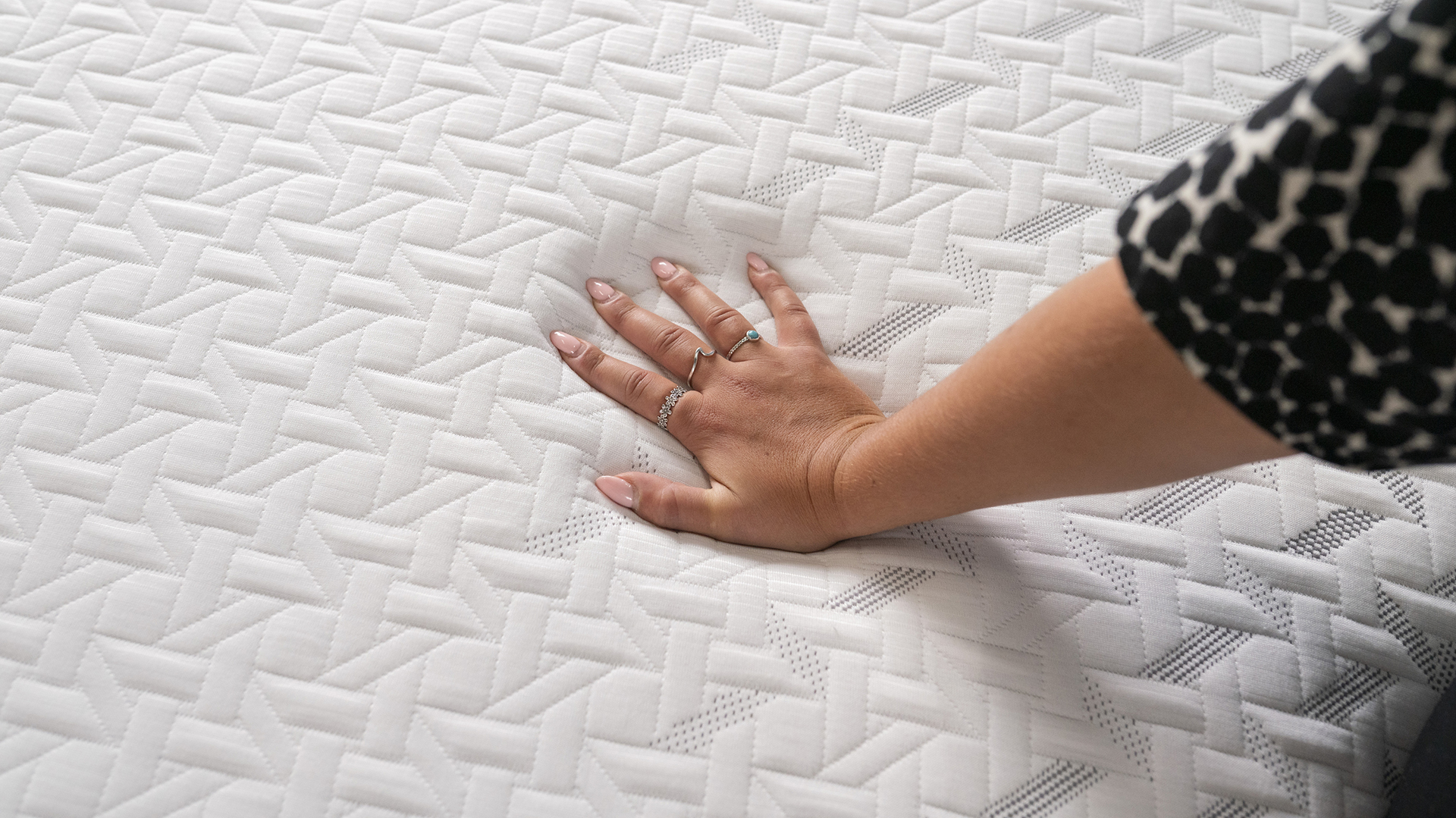

Specifications
Reasons to buy
Reasons to avoid
The Nectar Classic Memory Foam is a well-balanced, mid-range mattress that offers excellent pressure relief and support for your entire body. Although not a super sink-in mattress, the surface does contour to your joints to provide cushioned pressure relief. We found it to be a good all-rounder so if you toss and turn, the Nectar Classic should provide comfort to every sleep position you hit in one night.
Slightly thinner than the Nectar Premier that tops this guide, the Classic has a firmer feel balanced by a softer upper foam layer. It's hard to get the balance of pressure relief and support right, particularly at a mid-range budget, but our testers agreed the Classic pretty much nailed it. The temperature regulation also impressed us (although the Cocoon Chill is better for very hot sleepers), and while the edge support could be improved that's not unusual for an all-foam bed — and it outperforms many of the others here.
What we like about it...
✅ Comfortable for most sleep positions: The Nectar Classic is a medium-firm mattress that tips towards firm and with the cushioned memory foam top layer providing pressure relief, our testers were comfortable in most positions.
✅ Excellent for couples: Most of the mattresses in this guide offer good motion isolation but this aspect earned 5 stars from our testers and — combined with the versatile feel noted above — makes it a good choice for bed sharers.
✅ Fantastic value for money: At $649 for a queen in the regular Nectar mattress sales, the Nectar is among the most affordable mattress in this guide but it feels more expensive. Plus, the benefits are superb, with a 365-night trial and lifetime warranty.
What we don't like about it...
❌ Lacks support for back sleepers and heavy people: Our testers noticed that in some sleep positions (like on their backs) the Nectar has a tendency to sink at the hips. This can lead to lower back pain. The Puffy Cloud is better for dedicated back sleepers.
❌ Not a luxurious build: The Nectar Classic Mattress is one of our favorite memory foam mattresses because it provides a strong all-round performance at a good price — but it can't compare to the premium luxury of the Contour5 or the Tempur-Adapt.

I've slept on both the original Nectar Classic and the new Nectar Classic Memory Foam Mattress, and I can really feel the difference. The new Nectar is a touch softer than the previous model, making it ideal for all sleeping positions now (before we rated it mostly for side and back sleepers). There's plenty of support here to keep your spine aligned in any sleeping position, and the contouring effect cushions your curves without making you feel like you're being sucked into the mattress. I think the Nectar Classic is fantastic value for anyone looking to buy a memory foam mattress online.
Read more: Nectar Classic mattress review
6. Best memory foam mattress for back sleepers




Specifications
Reasons to buy
Reasons to avoid
The Puffy Cloud Mattress is a memory foam mattress with a firmer feel, counterbalanced by a plush quilted surface. The result is a mattress that, after a month of testing, we found to be the best memory foam mattress for back sleepers, as it delivers support to the entire lumbar region while cradling the touc points to prevent pressure build up.
Our testers fund there isn't much sink to the Puffy Cloud Mattress, allowing the spine to rest at a neutral angle when in a back sleeping position for fewer aches and pains. Side sleepers should also get on with the Puffy Cloud, as the quilted top provides pressure relief at the shoulders and hip. However, particularly lightweight sleepers might prefer the softer Nectar Premier. Weak edge support is an issue, but overall we found the Puffy Cloud enjoyable to sleep on — if perhaps not as luxurious as the Saatva Contour5 or the DreamCloud.
What we like about it...
✅ Medium-firm support: The Puffy has a firmer feel for a memory foam mattress, similar to the Siena. Your back will feel supported from the neck down, without the twisting that can occur when you’re sucked into a softer mattress.
✅ Cushioned pressure relief: Layers of felted fiber and memory foam ensure comfort the second you lie on the Puffy Cloud, relieving pressure where the body pushes into the bed. That immediate comfort is similar to the Tempur-Adapt, a premium all-foam mattress.
✅ Cool to the touch feel: The Puffy Cloud cover is refreshingly cool as soon as you climb into bed and maintains a neutral feel during the night.
What we don't like about it...
❌ Strangely slippery cover: If you hate making the bed in the morning, watch out for the Cloud cover, which has a slippery finish (presumably caused by the integrated cooling tech.) Our testers found the sheets often came loose, unlike the smooth cooling of the Cocoon Chill. But the bigger issue with the silky surface relates to edge support...
❌ Lacks support at the edges: By itself, the edge support is average for an all-foam bed. Add on the slippery cover and things become a little more precarious — sit on the side and you might find yourself sliding off. The cheaper Siena is superior here.

The Puffy Cloud delivers an excellent balance of comfort and support. The breathable cover feels plush (albeit a little slippery), while the comfortable pressure-relief foam promotes good spinal alignment. I recommend it for back sleepers who don't want a mattress they'll sink into, but also want to avoid a super firm feel. There's just enough cushioning at the pressure points to alleviate firmness and make this a good middle ground.
Read more: Puffy Cloud Mattress review
7. Best firm memory foam mattress for stomach sleepers



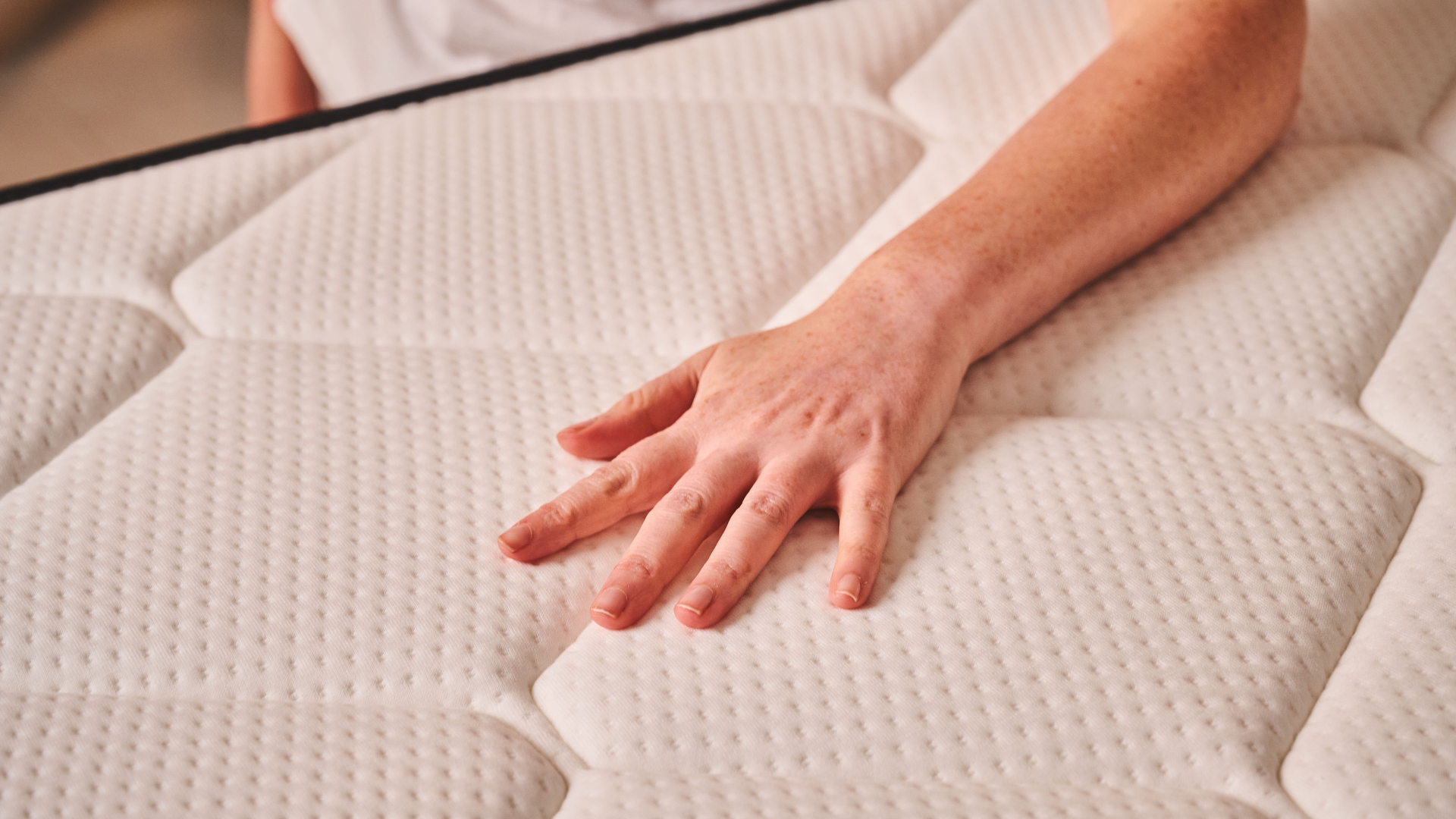
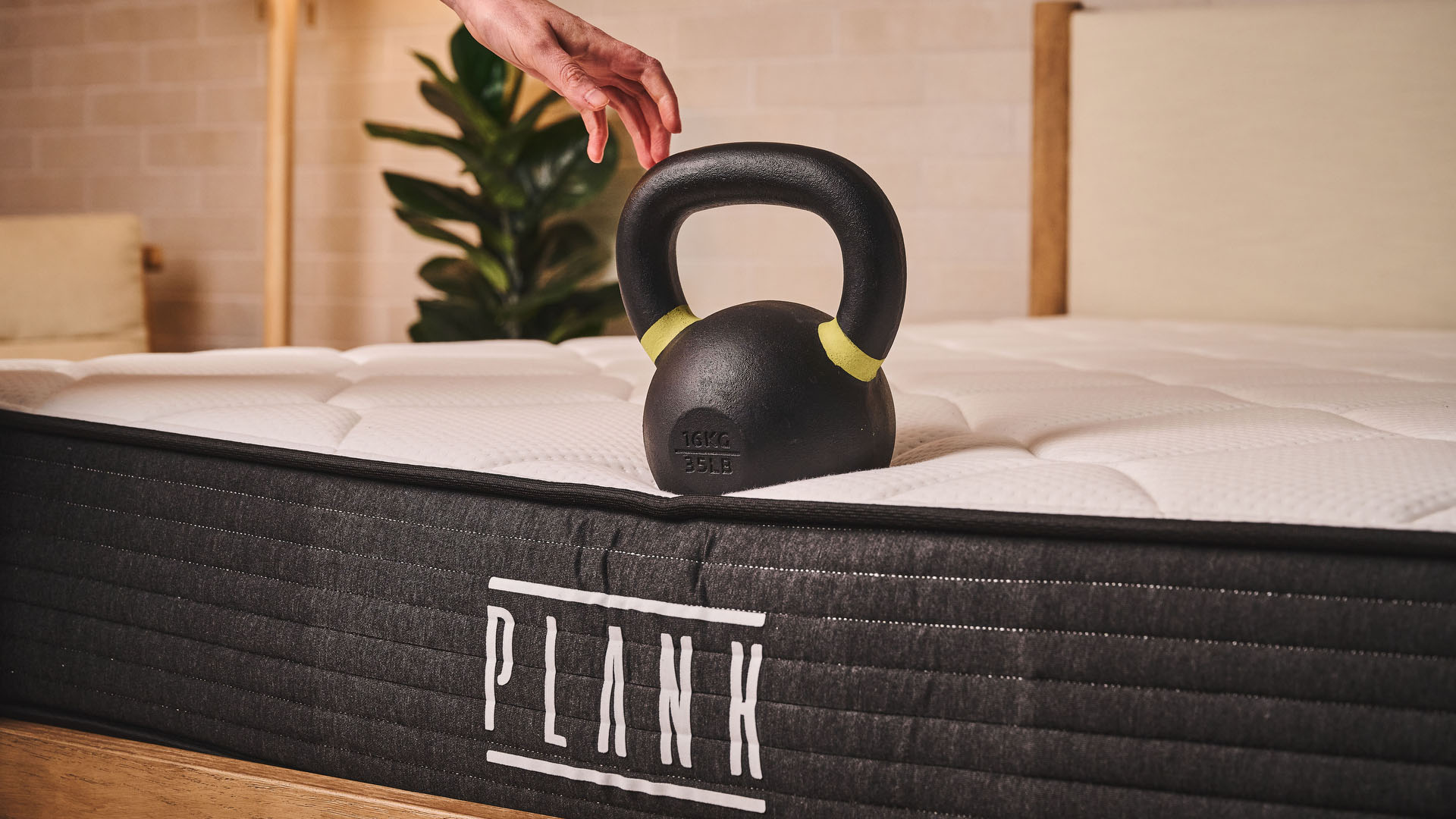
Specifications
Reasons to buy
Reasons to avoid
The Plank Firm Mattress is an all-foam bed unlike any other. This dual-sided design is Firm one way and Extra Firm the other, providing exceptional support and an unyielding feel. It's firmer than even the Siena and the flat surface keeps the spine comfortably aligned if you're a back or stomach sleeper.
However, this unusual firmness does come with downsides. Side sleepers, particularly those with a lighter build, are likely to wake up with an aching shoulder and hip after a night on the Plank Firm (the Puffy Cloud above is a better choice for side sleepers who want support.) And it doesn't have the cozy 'hug' feel you'd expect of a traditional memory foam mattress, such as the Nectar Premier. But the motion isolation is excellent and we rated the edge support amongst the best of any mattress we've tested. The Plank Firm is fairly unique in its appeal, and that makes it divisive – but if it's full-body support you want, this mattress delivers it by the bucket.
What we like about it...
✅ Support all across the body: Our testing panel found the Plank Firm supportive from the head all the way down to the toes, with the spine held in neutral alignment throughout the night.
✅ Exceptional edge support: The Plank Firm has the best edge support of any mattress in this guide, earning full marks from our testing panel. You can lie right on the edges without worrying you'll fall off.
✅ Double-sided design: While both sides of the Plank are firm, the flippable design gives the mattress versatility, allowing you to change the feel depending on your needs.
What we don't like about it...
❌ Too firm for side sleepers: The Plank Firm lacks the pressure relief side sleepers need at the hips and shoulders. The Puffy Cloud isn't ideal for side sleepers, but it's a firm mattress with better pressure relief.
❌ Can sleep warm: Hot sleepers should consider upgrading to the Plank Firm with GlacioTex cooling cover, otherwise you might find yourself waking up sweaty. The Nectar Classic or Cocoon by Sealy Chill have superior cooling.
❌ Hard to flip: Remember how we praised the dual-sided design of the Plank Firm? The downside is that a lack of handles makes flipping the mattress inconvenient.

The Plank Firm Mattress is unlike any other mattress in this guide. For a start, the double-sided design means this is a mattress with two feels: Firm and Extra Firm. But more notably, it's an all-foam bed with no sink and minimal pressure relief. I'm a stomach sleeper and I found this mattress incredibly supportive, as did my back sleeping testing panel. But if I rolled onto my side in the night, I woke up with a numb arm.
Read more: Plank Firm Mattress review
8. The best memory foam mattress for back pain





Specifications
Reasons to buy
Reasons to avoid
If you want a classic memory foam feel, you'll find plenty of it with the Tempur-Pedic Tempur-Adapt mattress. Tempur Materials are the original memory foam, developed from NASA foams to create cozy cushioning that immediately contours to your body. In some Tempur-Pedic mattresses, such as the Tempur-Cloud, this results in a mattress with a quicksand 'hug' effect. However, the Tempur-Adapt features a sturdy support core that lifts and straightens the spine. Our tester with back pain felt relief as soon as their lumbar touched those squidgy Tempur-Pedic foams.
The Tempur-Adapt has a comparable finish and price tag to the luxurious Saatva Contour5, but without the options (or the cooling) of its rival. However, Tempur Material is known for its unique feel and for many, the slow-moving foam is worth the investment.
We found the Tempur-Pedic Tempur-Adapt a touch too firm for side sleepers — upgrading to the Tempur-ProAdapt gives you more firmness options to choose from. Alternatively, the Purple Original mattress features exceptional pressure relief to ease back and joint pain in side sleepers, although due to the GelFlex Grid, it feels very different to the Tempur-Adapt (but we'll dive into that in the Also Tested section.)
What we like about it...
✅ Pressure relief at the lumbar region: Tempur Material foams are known for their cushioned 'hug', and with the Tempur-Adapt you'll get this marshmallow softness across your lower back, reducing pressure for fewer aches and pains.
✅ Comfortable for back and stomach sleepers: It's not all about the cushioning with the Tempur-Adapt, as a layer of dense foam at the base of the mattress keeps your spine from sinking too far.
✅ Top quality motion isolation: We expect good motion isolation from a memory foam mattress, but the Tempur-Adapt goes above and beyond. Our testers found the Tempur-Adapt able to "absorb virtually every movement".
What we don't like about it...
❌ Sleeps very warm: Our lead tester sleeps warm and regularly woke up sweaty on the Tempur-Adapt Mattress. The Cocoon Chill and GhostBed Luxe are specialist cooling foam beds, but even the cheaper Nectar Premier stays cooler overnight.
❌ No feel options: Unlike the similarly priced Saatva Contour5, the Tempur-Adapt is available in just one firmness option. Unless you want to pay to upgrade, that is — the versatile ProAdapt is around $1,000 more for a queen.
❌ Lacks support for side sleepers: Our side-sleeping testers had mixed results with the Tempur-Adapt. Some felt it too firm at the shoulder, others too soft at the hip, and one found it took a while to get comfortable. The Tempur-Cloud and Purple Original are better for side sleepers.

Tempur-Pedic mattresses are like Marmite: half of my team love the way they feel, half hate it. Personally, I rate Tempur-Pedic beds. I slept on a Tempur foam mattress during the third trimester of my pregnancy, when I was dealing with excruciating hip and lower back pain, and it was the only thing that helped me feel comfortable enough to actually sleep. That's also the level of comfy pressure relief you can expect from the Tempur-Pedic Tempur-Adapt. This is our best-rated memory foam mattress for back pain, with my lead tester getting instant relief the moment she laid on it. There is a downside though: it retains heat, so you'll need to consider an alternative (such as the Cocoon by Sealy above, which is also cheaper) if you have night sweats or hot flashes.
Read more: Tempur-Pedic Tempur-Adapt mattress review
9. The best hybrid memory foam mattress
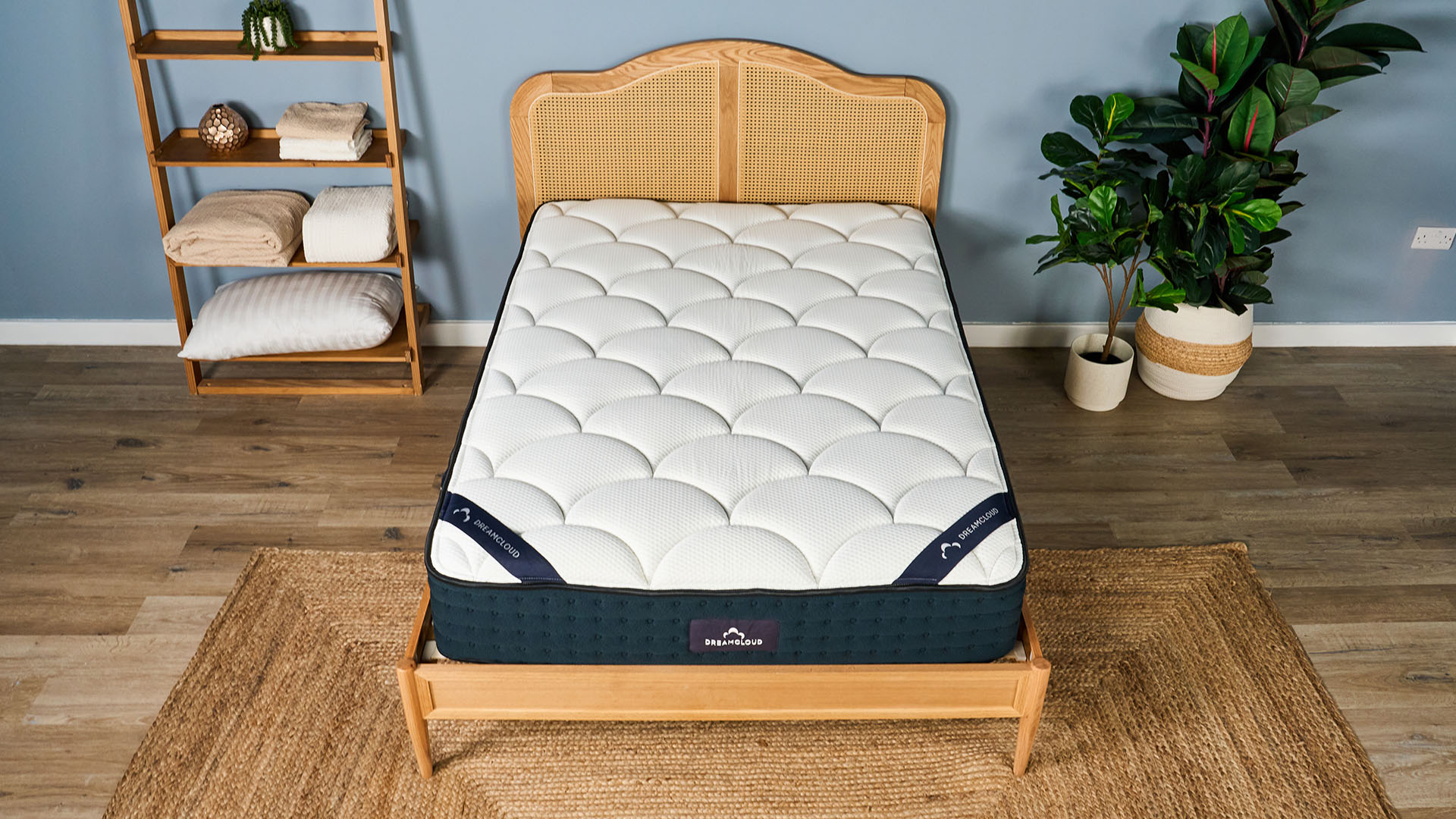
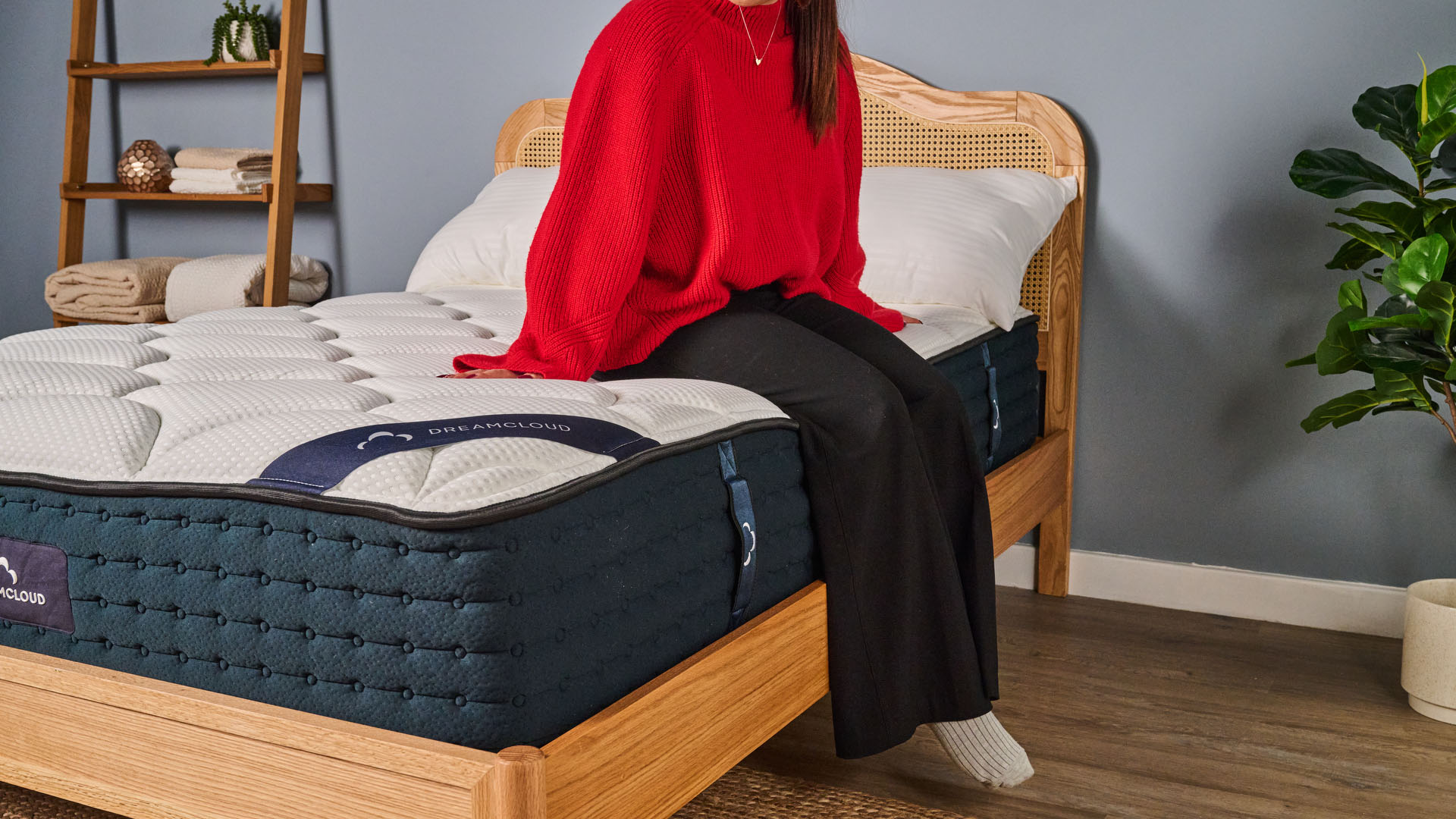



Specifications
Reasons to buy
Reasons to avoid
The DreamCloud Mattress uses multiple layers of memory foam to add a plush touch to a hybrid build (hybrid mattresses feature springs alongside foams — you can find our expert-tested picks in our guide to the best hybrid mattresses this year.) Offering luxury at a lower price, it's significantly cheaper than the Contour5, the cashmere blend cover provides pressure relief, while sturdy springs and a medium-firm feel make it a supportive pick for back sleepers.
The DreamCloud is a strong all-rounder, although our side sleeping testers found it took a few weeks to break in (the Nectar Premier offers comfort quicker.) The springs give the DreamCloud a bouncier feel than an all-foam bed but, unfortunately, not the improved edge support we might expect from a hybrid — it trails behind the Siena and the Plank Firm. But this is still an excellent example of how memory foam can enhance a hybrid bed.
What we like about it...
✅ Well priced luxury: We often recommend the DreamCloud as a lower cost alternative to the Saatva Classic, our all-time favorite mattress. While the DreamCloud isn't as luxurious, it offers a competitive feel for much less.
✅ Supports back and stomach sleepers: Strong coils and dense foams work together to keep the lumbar region elevated. Our front sleeping tester was impressed with the lack of "hip dip", keeping their lower back pain free.
✅ Supportive for sleepers with bigger builds: The DreamCloud has a good weight capacity and a strong, supportive feel that meant our heavier tester could enjoy head-to-toe comfort.
What we don't like about it...
❌ No sink-in feel: The DreamCloud has some plushness, but this isn't a bed that 'hugs' the body. For a proper memory foam embrace, consider the Tempur-Pedic Tempur-Adapt or check out its all-foam equivalent in our DreamCloud Memory Foam Mattress review.
❌ Weaker edge support: Hybrid memory foam mattresses typically have stronger sides than all-foam alternatives, so the hit-and-miss edge support of the DreamCloud is disappointing. The Plank Firm is all-foam but stronger at the sides.
❌ Needs breaking-in: It took some of our testers time to adjust to the DreamCloud, as it doesn't have the soft relief a side sleeper might expect. For a mattress that feels comfortable right away, consider the Puffy Cloud.

Like the Nectar Classic, the DreamCloud Hybrid Memory Foam was redesigned a few months ago. It's shorter at 12" (the older version was 14" tall) yet somehow packs in an extra layer. I highly rate DreamCloud mattresses and recommend the Hybrid Memory Foam to people who want a more responsive mattress (compared to all-foam beds) that still offers excellent pressure relief. The DreamCloud is the second highest-rated mattress my team has tested, and while you can buy it in a pure memory foam version, I think the Hybrid Memory Foam option is the most supportive. It keeps the spine aligned in all sleep positions, and gets rid of excess heat quickly for cooler sleep. My only gripe is that it takes a few weeks to break in, but once done it's seriously comfortable.
Read more: DreamCloud Mattress review
10. Best memory foam mattress on Amazon



Specifications
Reasons to buy
Reasons to avoid
Our lead tester described the EGOHOME 12" Memory Foam Mattress as "ultra body-cradling," hugging the shoulders and hips to deliver pressure relief that can rival even the Nectar Premier that tops its guide. That might sound marshmallow-esque but we found the medium-firm feel offers an impressive level of support. After over three weeks of testing our sleep team agreed it was "ideal for pretty much any sleep position," with pressure relief on the side and support for the back and front (although dedicated stomach sleepers should consider the Siena.)
As is a common thread in this guide, the motion isolation is top notch — we gave it five stars. The edge support is also excellent, comparable to the Siena. However, the EGOHOME does lag behind its competitor when it comes to temperature regulation, as it has a tendency to trap heat. It can also trap you — our tester found she had to fight to change position in the night. If you have the money for the Nectar Premium, we recommend upgrading for the enhanced cooling and durability. But this is a good alternative for anyone on a budget.
What we like about it...
✅ Hugs the body to relieve pressure: "Shape-molding comfort" is how our lead tester describes the EGOHOME's pressure relief. It eases around your body to cushion every part of you.
✅ You won't feel your partner toss and turn: The slow-moving foams of the EGOHOME earned five stars from our testers for motion isolation and they can absorb pretty much every movement from a restless partner.
✅ Classic foam feel on a budget: If you dream of the traditional body-hugging foam feel of the Tempur-Adapt or Nectar Premier but your budget won't stretch that far, the EGOHOME is a good alternative (albeit as a cheap foam bed, it has some pitfalls.) The Zinus (also tested) is another good choice.
What we don't like about it...
❌ Traps a lot of warmth: We described the EGOHOME as "stuffy" and on a warm night you can expect the bed to heat up. That's not unusual for a budget all-foam bed but the Siena is a similarly priced alternative that sleeps cooler.
❌ Hard to change position: If you're a combination sleeper — or anyone who likes to move around in the night — the 'hug' of the EGOHOME can make you feel trapped. Consider opting for the EGOHOME Black Hybrid mattress, for a bit more bounce.
❌ Not as plush as you might expect: While you do sink into the EGOHOME, it doesn't have the cloud-like fluffy comfort of a softer bed. The Zinus Green Tea mattress (also tested) is better for those seeking something soft at a similar price.

I've tested plenty of beds in our sleep studio alongside Frances, the lead tester in our EGOHOME review, and I know she struggles to find a mattress that delivers the pressure relief she needs as a lightweight side sleeper. So when she started praising the cushioning of the EGOHONE, I knew it was a winner. The heat retention can be an issue, as can its tendency to trap you in the foams, but with a queen often sold for just $369.99 at EGOHOME, some faults are to be expected. It's still excellent value, particularly if you can spot a sale at the EGOHOME Amazon store.
Also tested
The memory foam mattresses below are also tested and recommended by our sleep experts, having received strong marks in our testing criteria. They're worth considering if you're trying to find a memory foam mattress for you and the options above don't quite meet your need.
Dreamfoam Essential mattress ★★★★
The biggest benefit of the Dreamfoam Essential is the massive size range. That includes unusual sizes, such as Olympic queen and RV king, plus heights ranging from 6 inches to 14 inches. If you want an RV mattress this is our top pick but for standard bed frames, the Siena outperforms it. From $205 at Brooklyn Bedding.
▶ Read more: Brooklyn Bedding Dreamfoam Essential mattress review
Zinus Green Tea 10" Memory Foam Mattress ★★★½
The soft, squishy foams of the Zinus Green Tea are perfect for side sleepers and the pressure relief is exceptional. Back and stomach sleepers will need something firmer and the edge support is poor — which is why we rank the EGOHOME above it — but it's an excellent choice for a guest room. If you're looking for a bargain, keep an eye on Amazon. From $129.99 at Amazon.
▶ Read more: Zinus Green Tea Memory Foam Mattress review
DreamCloud Classic Memory Foam Mattress ★★★★
The all-foam alternative to DreamCloud's signature hybrid mattress, the Classic Memory Foam impressed our testers with its supportive build. We don't think it offers quite the value for money as the Classic Hybrid but the temperature regulation and motion isolation are top notch. From $299 at DreamCloud.
▶ Read more: DreamCloud Classic Memory Foam Mattress review
Casper The One Mattress ★★★★
Casper's flagship The One mattress has a firmer feel that gently contours to the body, creating support that our back sleeping testers loved. The feel is close to the Nectar Classic and it has comparable (and excellent) motion isolation. However, the edge support is only average and our tester found the foams held onto heat on warm nights. From $749 at Casper.
▶ Read more: Casper The One Mattress review
Purple Original Mattress ★★★★
The Purple Original uses a GelFlex Grid — a flexible, elastic, geometric grid that sits just beneath the surface and moves with the body — to create pain relief that can compete with the Tempur-Pedic Tempur-Adapt. The unusual feel isn't for everyone but once our testers had gotten used to it, they loved the adaptable support. From $999 at Purple.
▶ Read more: Purple Original Mattress review
Nectar Luxe Memory Foam Mattress ★★★★
The Nectar Luxe adds even more foam to the Nectar Premier that tops this guide, creating a sumptuous feel that our side sleeping testers loved. However, it can trap heat. If you sleep warm, opt for the Premier. But if all you want it to be cradled in a foam hug, go for the Luxe. From $999 at Nectar.
▶ Read more: Nectar Luxe Memory Foam Mattress review
Leesa Original Memory Foam Mattress ★★★★
The Leesa Original is a good alternative to the Puffy Cloud for back and front sleepers who want a more traditional foam feel. However, the edge support lets it down, which is why it was just nudged out of our top picks. From $749 at Leesa.
▶ Read more: Leesa Original Mattress review
GhostBed Luxe mattress ★★★★
One of our favorite cooling mattresses, our testers found the cushioned pressure relief of the GhostBed Luxe ideal for hot sleepers who lie on their side. This is our best luxury cooling mattress pick, but the Cocoon by Sealy Chill's mid-range price tag gives it the edge. From $1,349 at GhostBed.
▶ Read more: GhostBed Luxe mattress review
Tempur-Pedic Tempur-Cloud mattress ★★★½
The Tempur-Pedic Tempur-Cloud mattress is cheaper than the Tempur-Adapt but does lack the balance of support and pressure relief that makes the Tempur-Adapt stand out. But it offers all the squishy cushioning you'd expect from its fluffy namesake. If it's not on sale, use promo code CLOUD30 to save. From $1,189 at Tempur-Pedic.
▶ Read more: Tempur-Pedic Tempur-Cloud mattress review
Best memory foam mattress 2025 review scores: At a glance
Mattress | Our score | Header Cell - Column 2 | User score | Header Cell - Column 4 |
|---|---|---|---|---|
Nectar Premier Memory Foam | ★★★★½ | Generated from a four-week testing period, with our lead reviewer and her partner sleeping on a queen size. | ★★★★ | Averaged from over 6,000 reviews at Nectar, over 7,000 reviews at Amazon and over 9,000 reviews at other retailers including Ashley Furniture and JCPenney. |
Siena Memory Foam | ★★★★ | Generated from a three-week testing period, with our lead reviewer sleeping on a twin size. Additional testing on a queen size from our sleep team. | ★★★★½ | Averaged from over 2,600 reviews at Siena Sleep and over 560 at Amazon. |
Saatva Contour5 | ★★★★½ | Generated from a three-week testing period, with our lead reviewer sleeping on a king size. | ★★★★★ | Averaged from a handful of reviews at Saatva at Saatva. No third-party reviews and a new mattress release — we'll update when more reviews are available. |
Cocoon by Sealy Chill | ★★★★ | Generated from a two-week testing period, with our lead reviewer sleeping on a queen size. Currently being retested to gather data for a longer review period of 30 nights. | ★★★★½ | Averaged from over 7,800 reviews at Cocoon. No third party retailer user reviews available. |
Nectar Classic | ★★★★½ | Generated from a three-week testing period, with our lead reviewer sleeping on a twin size. Currently being re-tested in a queen size. | ★★★★½ | Averaged from over 50,000 reviews at Nectar Sleep, 82,000 at Mattress Warehouse, 2,400 at OVC, and 7,500 at Amazon. |
Puffy Cloud | ★★★★ | Generated from a three-week testing period, with our lead reviewer sleeping on a king size mattress with a medium-firm feel. | ★★★★½ | Averaged from over 12,000 reviews at Puffy however all Puffy mattress reviews are fed into one group so it's hard to separate them. |
Plank Firm Mattress | ★★★★ | Generated from a six-week testing period, with our lead reviewer sleeping on a full size. | ★★★★ | Averaged from over 3,400 reviews at Plank Mattress, over 100 reviews at Amazon, and over 200 reviews at Walmart. |
Tempur-Pedic Tempur-Adapt | ★★★★½ | Generated from a three-week testing period, with our lead reviewer sleeping on a twin size. | ★★★★ | Averaged from over 3,000 reviews at Tempur-Pedic, over 2,900 reviews at Mattress Warehouse, and 145 at Amazon. |
DreamCloud Hybrid Memory Foam | ★★★★½ | Generated from an initial three-week testing period, followed by three consecutive months of sleeping on a twin and a queen size (dual testers). | Row 8 - Cell 3 | Averaged from over 8,900 reviews at DreamCloud, over 1,900 at Amazon, over 13,400 at Mattress Firm, and 1,400 at Walmart. |
EGOHOME 12" Black Memory Foam Mattress | ★★★★ | Generated from a three-week testing period, with our lead reviewer sleeping on a full size. | ★★★★½ | Averaged from over 120 reviews at EGOHOME and over 4,800 reviews at Amazon. |
How we test memory foam mattresses
At Tom's Guide, we are consistently researching and testing new memory foam mattresses so we can confidently recommend the best ones. Our review process is editorially independent and our team of expert testers use a set criteria to ensure you get a well-rounded, unbiased opinion. Only the very best memory foam mattresses make it into this guide.
We test all memory foam mattresses in these key performance areas: support, comfort, pressure relief, motion isolation, temperature control, edge support, and build quality.
Each mattress is tested by one lead tester, with a further testing panel consisting of people with different sleep styles and body types also trying the bed to provide a range of opinions.
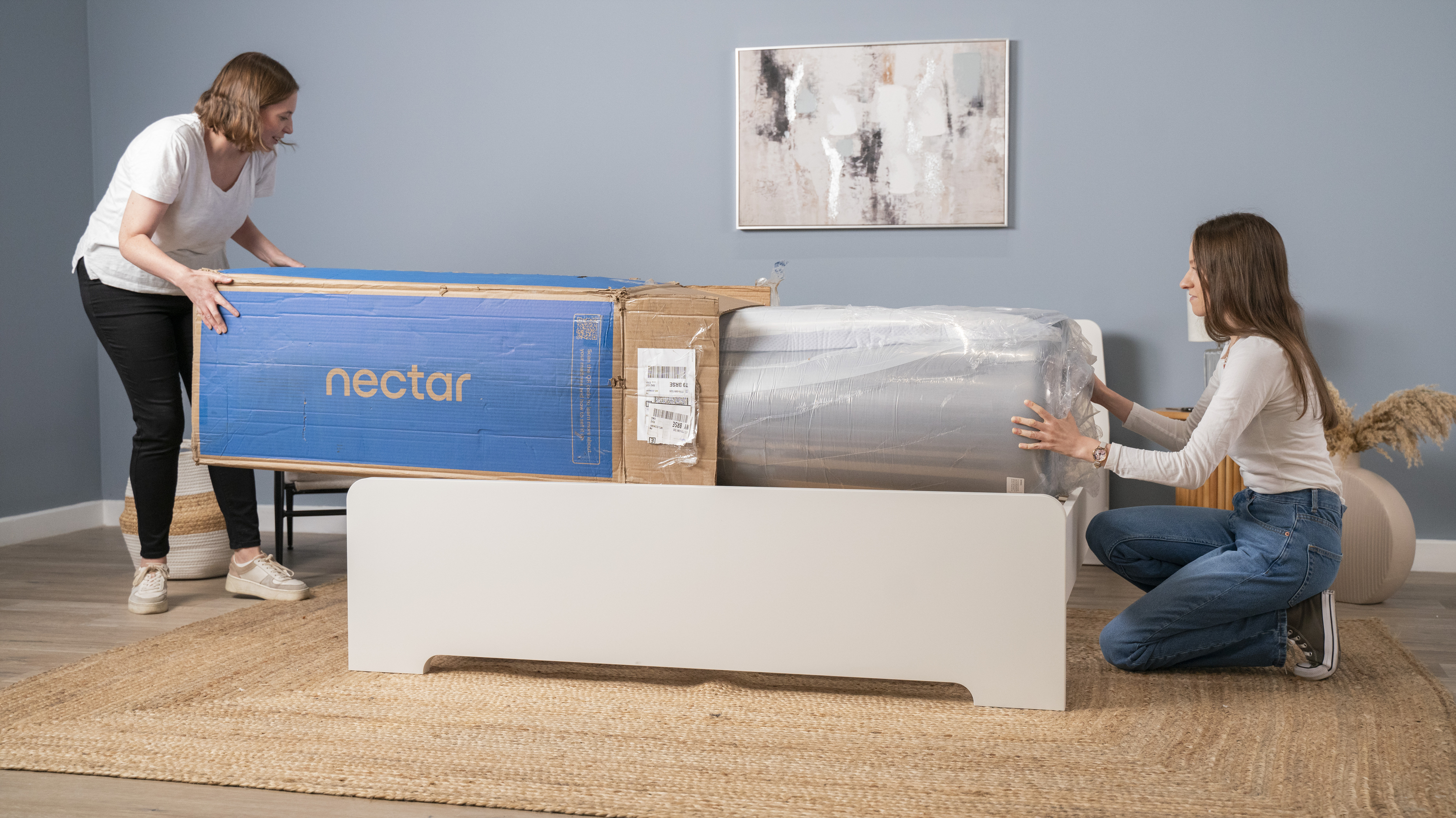



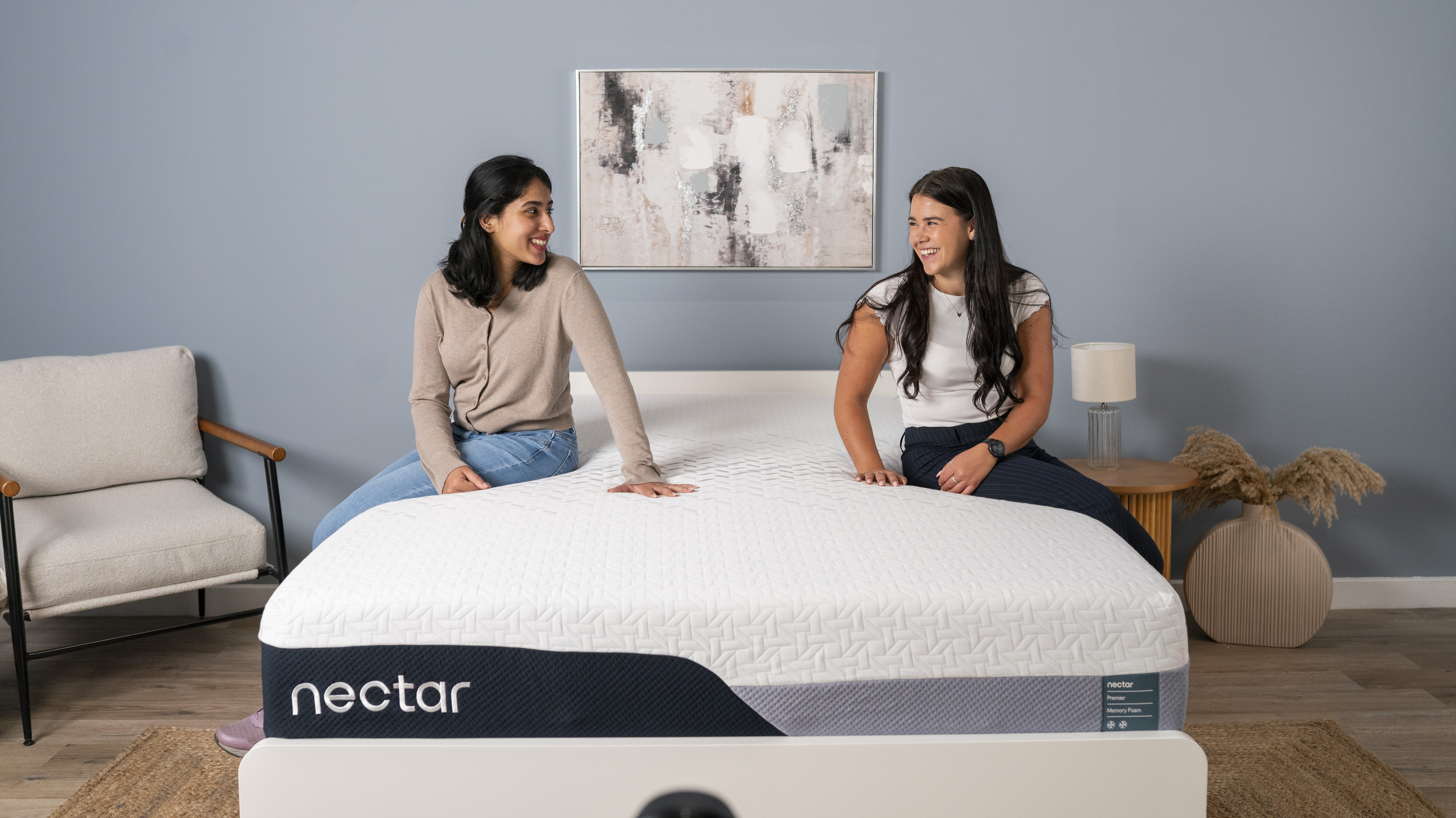
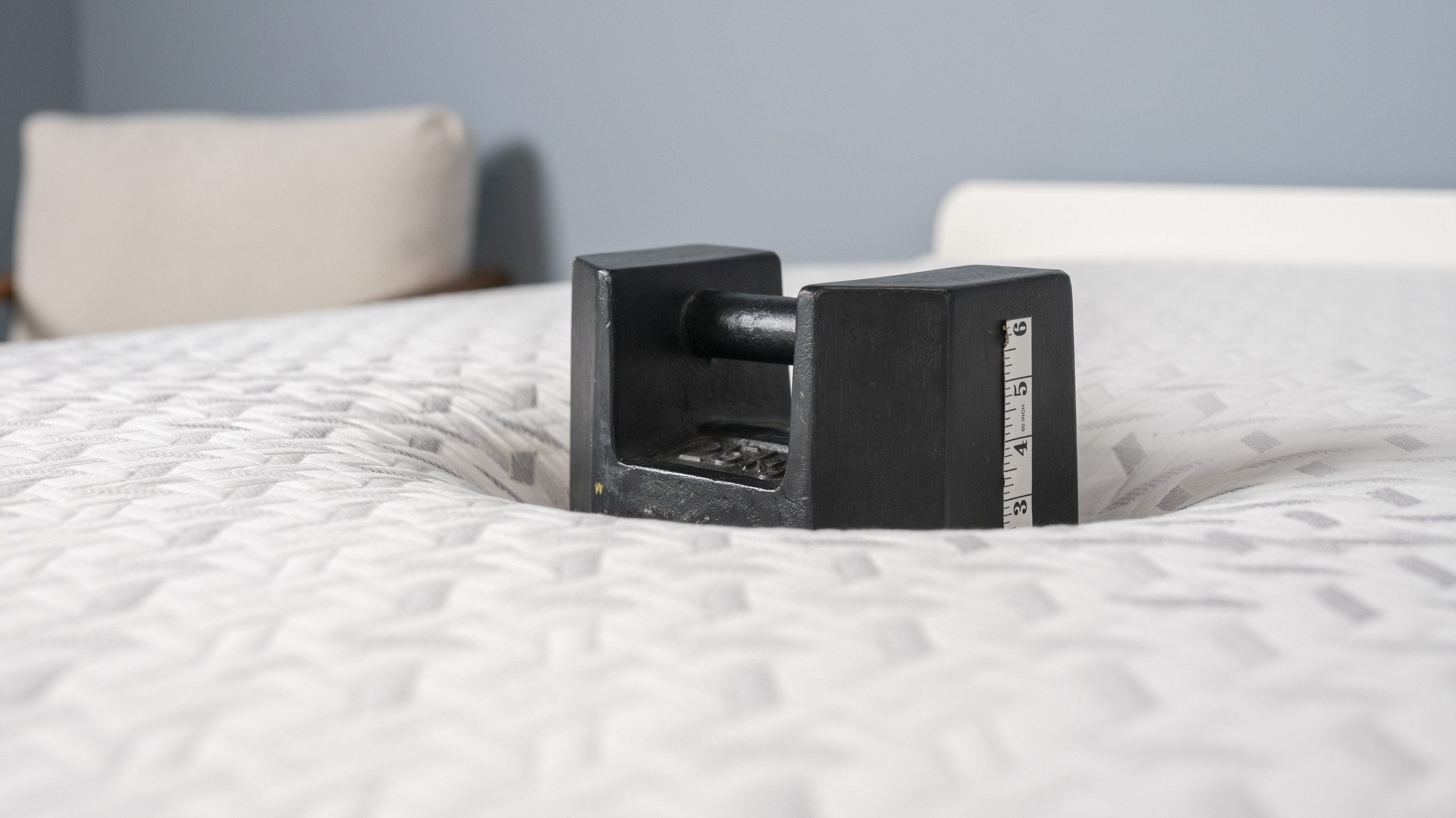

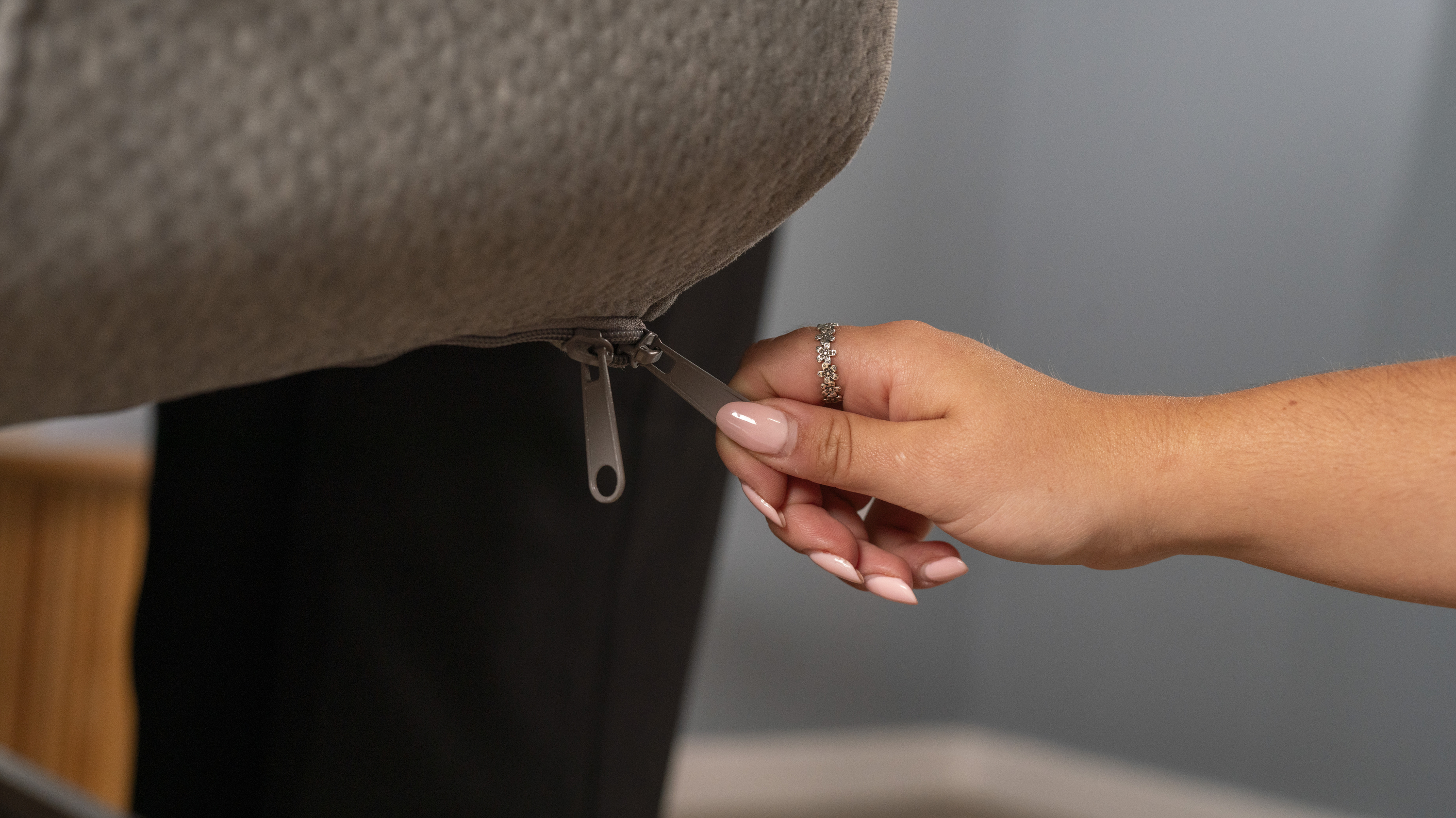

In addition, we complete a series of objective tests in our sleep studio. These include drop tests and weight tests, for results we can easily compare against other mattresses we've reviewed.
After a testing period of at least three weeks, we compile our results into a review. Every area is awarded a score out of 5, which we to determine our overall rating of the mattress.
We also analyze customer reviews to identify potential areas for concern or praise that are affecting the wider user base. We then compare this information to our own testing results, to see if there are any aspects of the mattress that require further analysis.
You can learn more about our testing process on our mattress methodology page.
Memory foam mattress FAQs
What we look for in a memory foam mattress
Why you can trust Tom's Guide
The Tom’s Guide sleep team has tested a wide range of memory foam mattresses and we’re always looking for the next bed to ensure we're making the best recommendations for you. Drawing from thousands of hours sleeping on all-foam mattresses, we test each memory foam mattress for the following features to determine who this bed suits.
Support
Mattress support keeps the body in a comfortable position all night, reducing stress on the muscles. The level of support offered by any mattress will vary depending on the sleep style and body type of the sleeper. Memory foam mattresses can offer excellent support but with no spring base, all-foam beds require dense stability foams to ensure the body doesn't sink too far through the comfort layers.
We also test edge support, which refers to how strong a mattress is at the perimeter. This is an area in which memory foam mattresses often struggle, so alongside testing the overall edge strength, we consider how the edge support compares to other memory foam models.

Pressure relief
Pressure builds up where your body presses into the mattress — such as the shoulders, hips and back — but a good mattress can alleviate this stress. Memory foam mattresses are typically excellent at pressure relief, as the cushioning contours to the body to distribute weight and ease the contact points.
Motion isolation
If you’ve ever shared a bed with a restless sleeper, you’ll understand the importance of motion isolation. This describes how well the mattress can “trap” movement, ensuring it doesn’t travel from one side of the bed to the other. Again, this is an area where the dense foams of a memory foam mattress perform well.
Temperature control
Body temperature naturally cools as we sleep and a good mattress will help you maintain this cooler feel. In comparison to breathable hybrid mattresses, memory foam mattresses have a reputation for trapping warmth, but many of the best models now include cooling materials to compensate for heat retention. The best way to determine if this tech actually works is to sleep on the mattress.
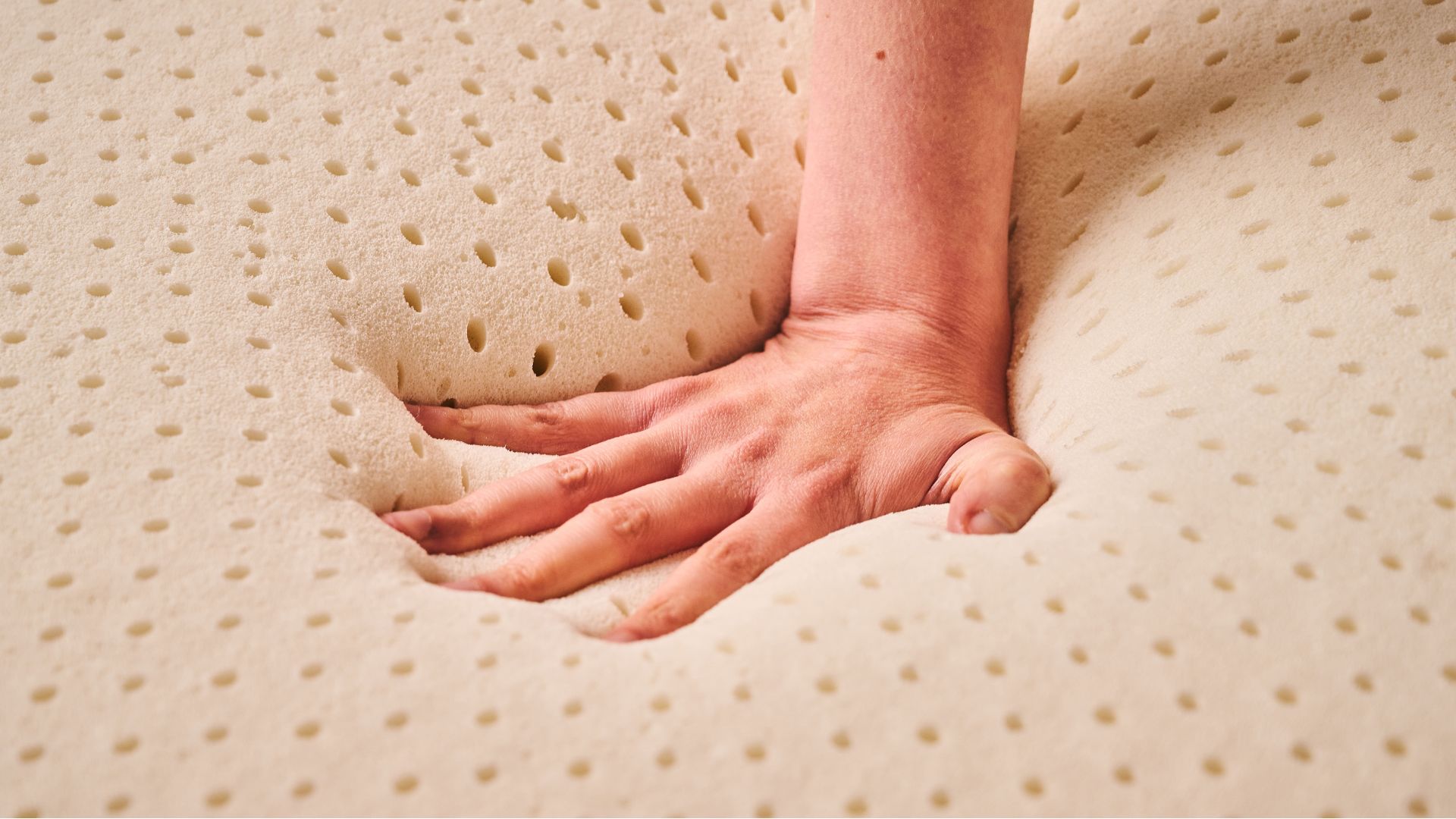
Construction and durability
Memory foam mattresses start to sink as they age, leaving permanent indents in the surface. While it’s hard to test durability during our review period, we take into consideration how sturdy the mattress feels, if it looks well made, and what other customers are saying. We also inspect the construction. For a breakdown of what to look for in a memory foam mattress, check out our guide to types of foam.
How to choose the right memory foam mattress for you
The mattresses in this guide have all been tested and recommended by our experienced sleep team. Here’s how to pick the right choice for yourself:
Sleep position
Sleepers of all types can get a good night’s rest on a memory foam mattress, but we often recommend all-foam mattresses for side sleepers. We recommend medium-soft to medium-firm mattresses for side sleepers, combining ample pressure relief with support.
Back sleepers should consider a medium-firm to firm memory foam mattress, as contouring can prevent pressure build-up, but you must avoid anything too soft that can cause the lumbar region to sink. Similarly, stomach sleeper should opt for a firm feel in a memory foam mattress.

Body type
Weight affects how firm a mattress feels. Lightweight sleepers will often perceive a mattress as firmer than someone with the same sleep position but a heavier build. As the lack of coils means memory foam mattresses typically feel softer than hybrids and innersprings, they often suit lighter and average weight sleepers. Memory foam mattresses can be suitable for bigger bodies, but the best mattresses for heavy people are, admittedly, often hybrids.
Sleep needs
We test all mattresses for performance aspects such as motion isolation, edge support and temperature control, but the importance of these features will depend on your own sleep needs.
Do memory foam mattresses sleep hot?
Memory foam can trap warmth within its dense cells and this problem is often more pronounced in softer, sink-in all-foam mattresses (it's hard for air to circulate when you're being 'hugged' by the bed.)
Nowadays, however, foam creation and pouring is becoming more advanced. We're learning better ways to formulate memory foam so it's less inclined to trap heat.
Memory foam infusions are also becoming popular. This is when additional ingredients are added to the foam, such as cooling gels and copper, to absorb heat and help it dissipate.
And looking beyond the foam, elements such as cool-to-the-touch mattress covers can help offset a stuffy foam. Some brands are even experimenting with cooling tech such as graphite ribbons — wedged between layers of foam — to reduce heat build up in your mattress.
How long do memory foam mattresses last?
A good quality memory foam mattress will typically last between six and 10 years. If you start to notice indents from your body in the surface, it's time to replace your memory foam mattress.
What is the best mattress thickness for a memory foam mattress?
We recommend a mattress thickness of at least 10 inches when choosing a memory foam mattress for an adult. Thicker memory foam mattresses (around 14 inches and taller) are best for couples and side sleepers. If you’re considering a mattress measuring under 10 inches, it must use quality materials to ensure support — the Purple Original is a good example.
How do you clean a memory foam mattress?
Taking good care of your memory foam mattress can prolong its lifespan. While we recommend cleaning your mattress regularly, avoid getting memory foam wet, as this can lead to mold and mildew. For more advice, check out our guide how to clean a mattress.
What are the disadvantages of a memory foam mattress?
Memory foam mattresses can trap heat, causing you to wake up warm and sweaty (although many memory foam mattresses add cooling layers.) Also, some people don’t like the ‘hug’ feel of memory foam, preferring to lie on top of the mattress. The slow-moving foams can also make it hard to change position.
Get instant access to breaking news, the hottest reviews, great deals and helpful tips.

Claire is a Certified Sleep Science Coach and the Senior Sleep Editor at Tom's Guide who curates our mattress buying guides and oversees our rigorous mattress testing procedures. Claire has over 16 years’ product review experience and is connected to a wealth of globally renowned sleep experts including mattress designers and buyers, neuroscientists, and doctors of sleep medicine. As the Managing Editor of our Sleep and Mattress Team, Claire is responsible for all mattress and sleep content published on Tom’s Guide and is our expert on Saatva, DreamCloud, and Nectar mattresses. Claire is also certified to advise people on how to choose a mattress that suits their needs and budget, as well as helping them to create a nighttime routine and bedroom environment that helps them sleep better.
- Ruth JonesSenior Sleep staff Writer

